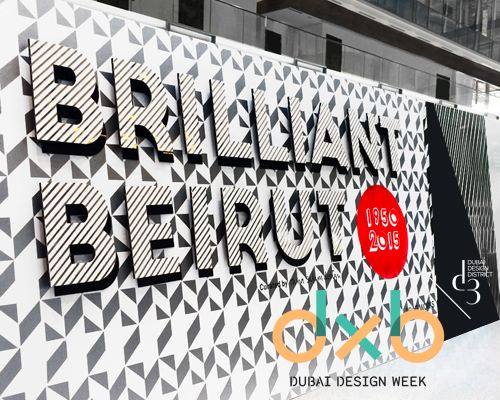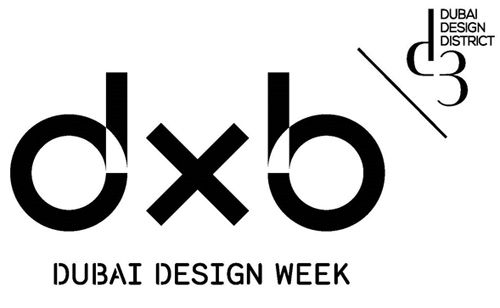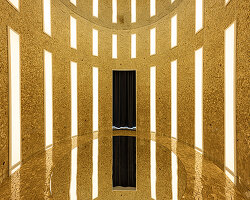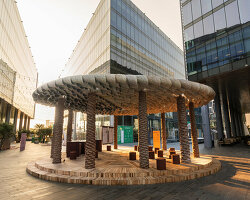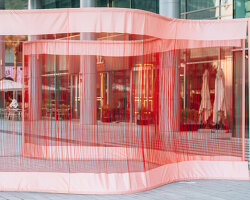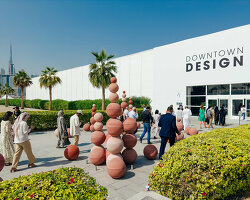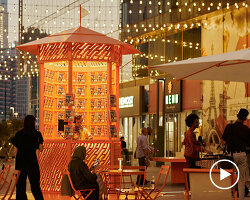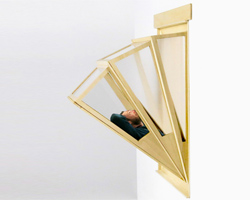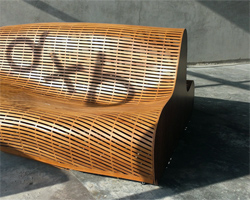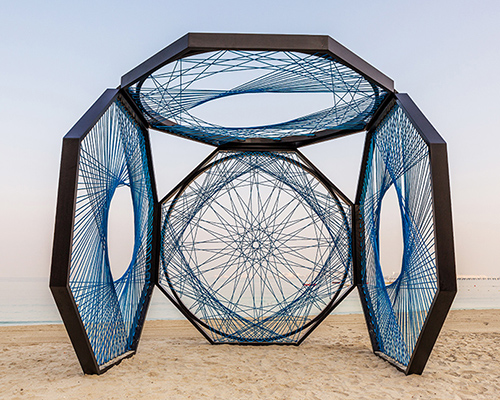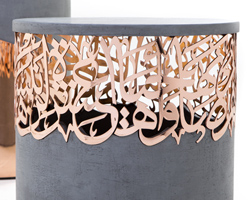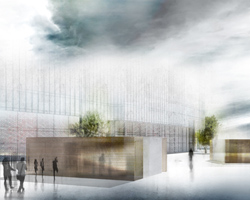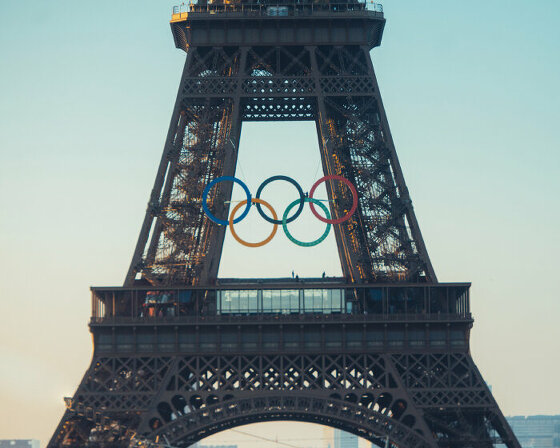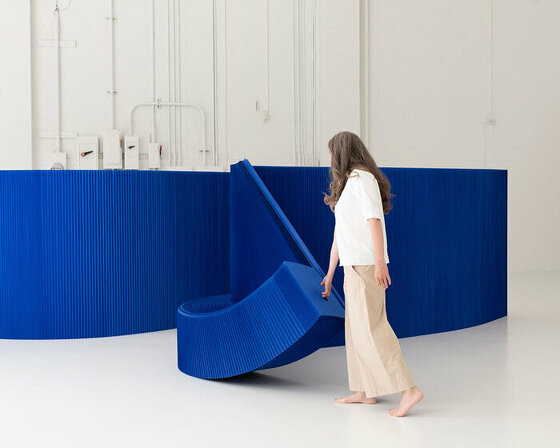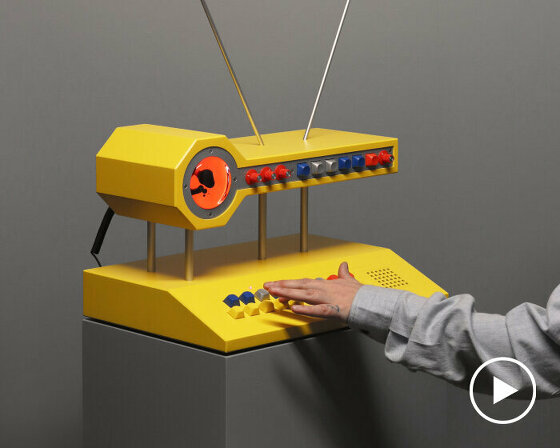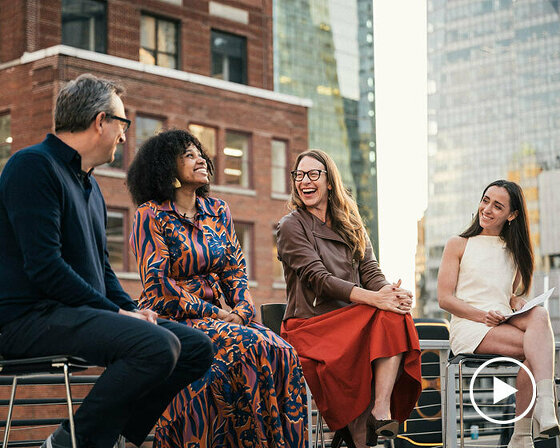brilliant beirut chronicles lebanon’s design scene from the 1950s to present day
image © designboom
tracing the evolution of lebanon’s creative scene from the 1950s to present day, the exhibition ‘brilliant beirut’ forms a visual narrative of the significant developmental stages and shifts in design and architecture over the course of seven decades. presented during dubai design week at the city’s ever-expanding dubai design district, the show highlights some of the city’s most important structures, educational triumphs, graphic attitudes, fashion trends and furniture aesthetics.
long panels displaying both visual and textual information direct viewers on a journey through the contemporary design history of beirut, exploring how the city’s complex social make up, craft traditions and ample production resources helped contribute to the country’s ascendance within the global design scene.
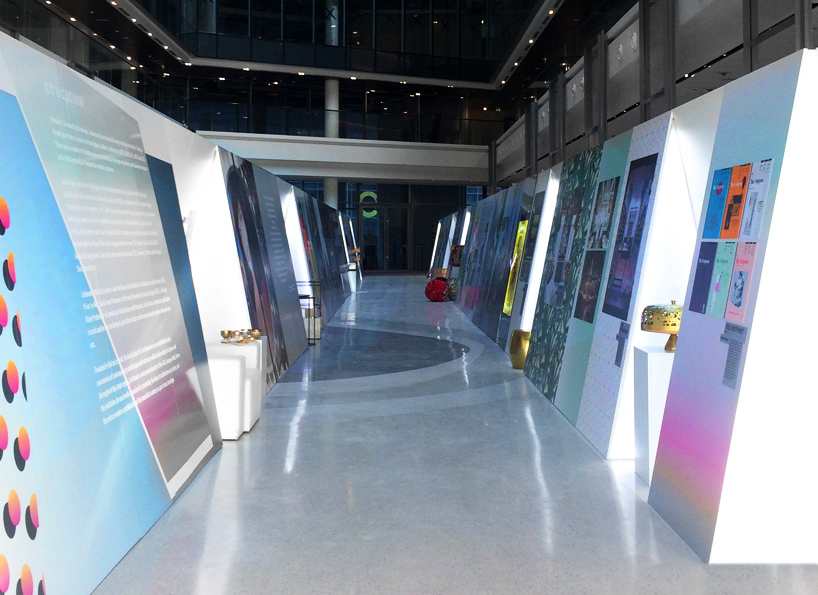
the exhibition leads viewers on a visual journey through the recent creative history of beirut
image © designboom
‘brilliant beirut’ curator, beirut-born and based designer rana salam, pinpoints key moments and creatives that have influenced the city’s reputation and design development. ‘there is a need to change the world’s perception of the middle east, and to reflect it in a fresh and engagingly positive light,’ she says. ‘what better medium to use than the power of design?’
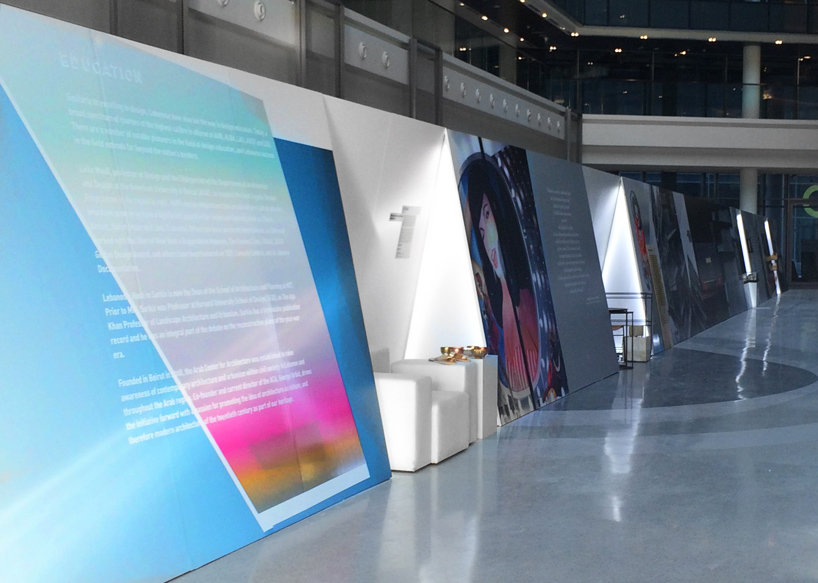
large, slanted panels display both image and text-based information supporting the exhibition theme
image © designboom
1950s: the birth of the republic
the 1950s was a significant period in the development of lebanese design culture. marked by an increasing self-confidence, the country began to establish its own distinct architectural and design style, with prolific creative activity paving the first steps toward forming an aesthetic lebanese vocabulary. during that period, the city of beirut saw the hotel phoenicia (built 1954-1962), the hotel carlton (1957) and the pan-american building (completed in 1953) rise to dominate the skyline. lebanon’s first group of established architects, such as george rais, assem salam, khalil khoury and karol schayer, began to literally build a design culture in the city, laying the foundations for a creative genesis within the new republic.
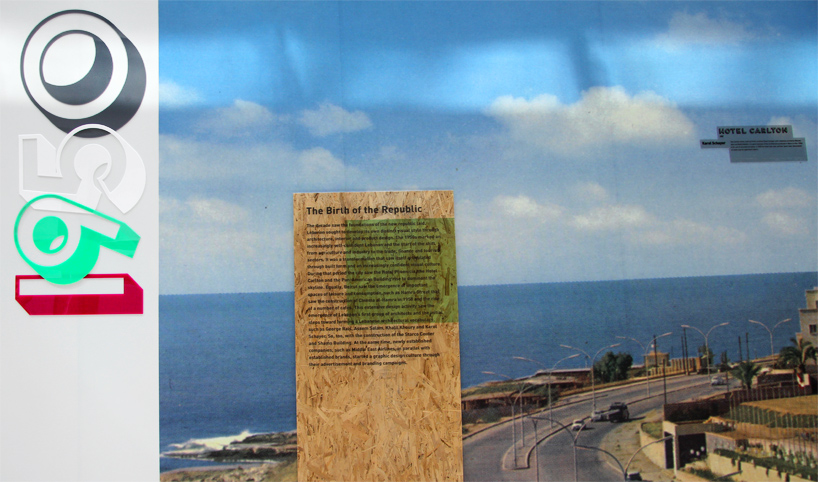
the exhibition begins at 1950, with photographs of modern architecture in the region at the time
image © designboom
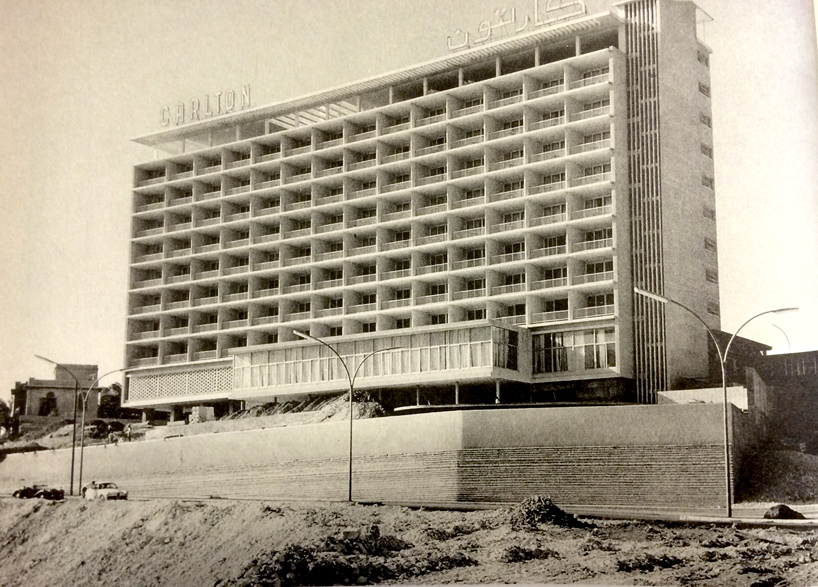
an image of the carlton hotel, built by polish architect karol shayer in 1957
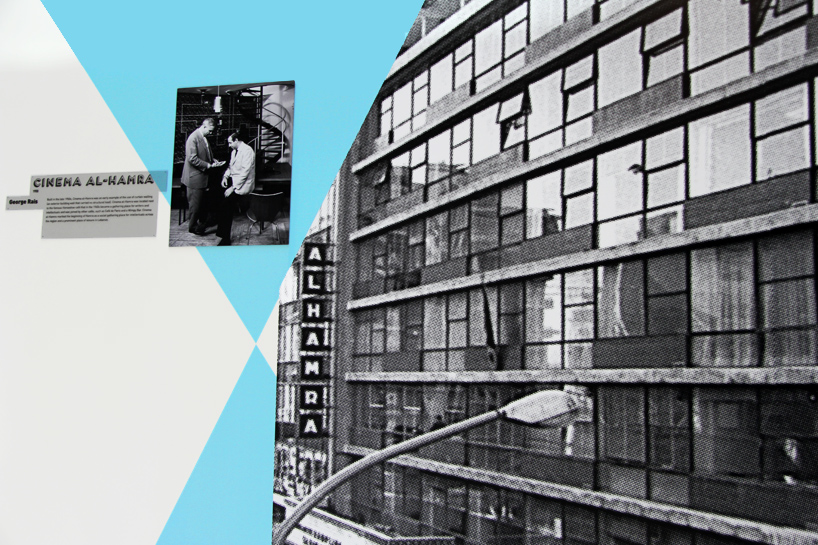
visuals of the 1958 cinemal al-hamra by architect george rais
image © designboom
1960s — beirut swings too
an economic boom delivered a boost in construction to the city, resulting in the formation of new companies and in turn, more branding opportunities. a strong graphic presence was developed to identify company logos and advertising campaigns, informed by a european graphic aesthetic. newly established companies, such as middle east airlines, started a packaging and poster design culture based on their branding campaigns. architecturally, during this era, significant structures continued to pierce the city skyline, such as the multi-use shopping center ‘the egg’ and the residential building ‘koujar-jaber’ by lebanese architect joseph philippe karam.
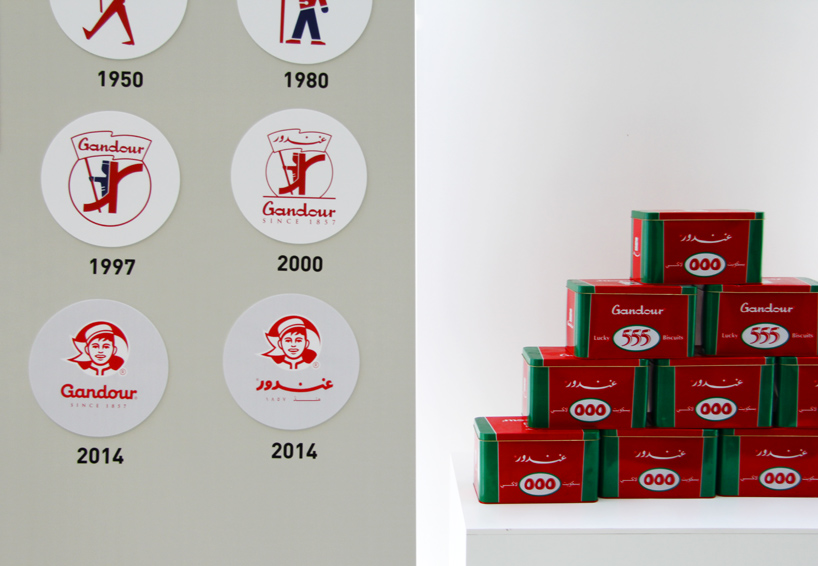
the evolution of ‘gandour’ visual identity, an iconic bakery and candy store in lebanon
image © designboom
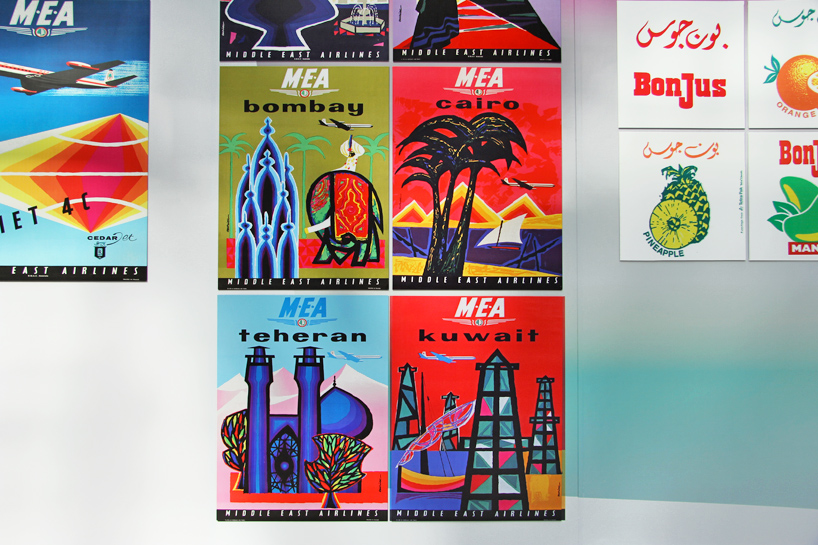
posters from the 1960s advertising flight options on middle east airlines
image © designboom
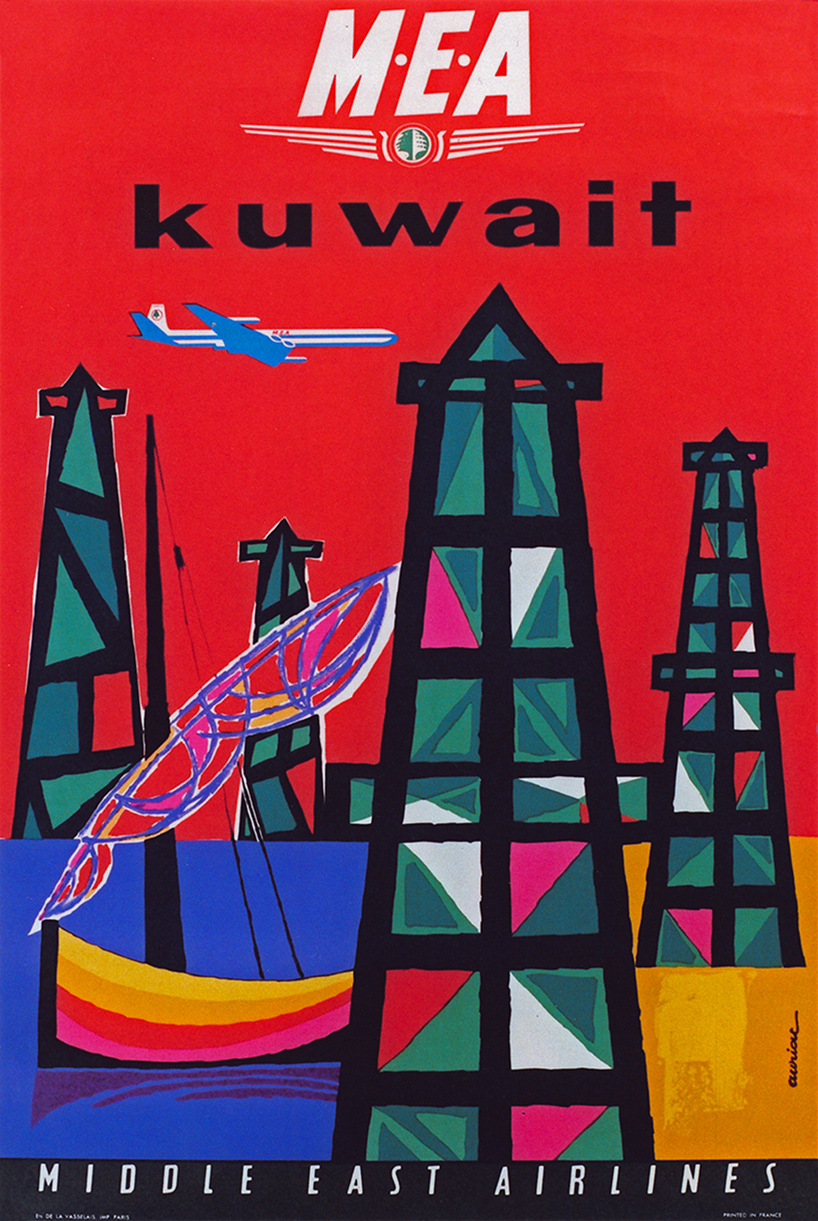
a 1960s poster by MEA showing their flight route to kuwait
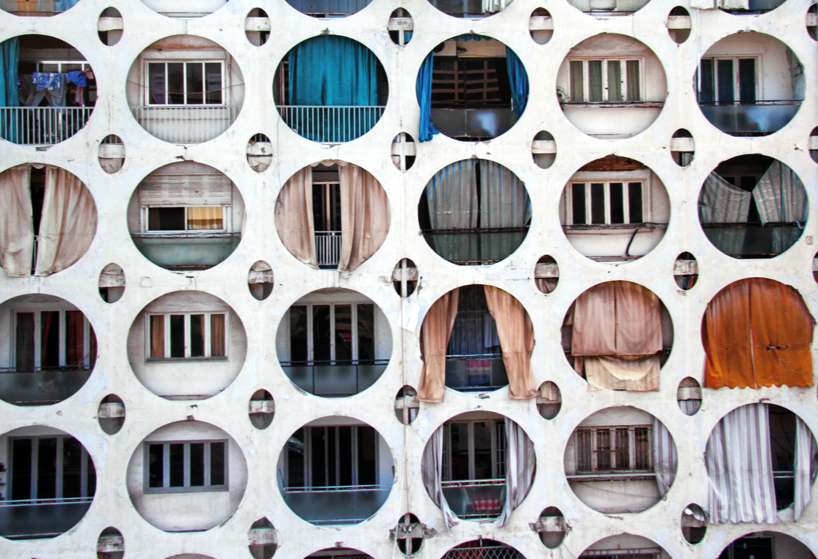
photograph of the 1964 koujak-jaber building by victor bisharat
photo by serge najar, courtesy of gallery tanit beirut
1970s — arab modernism
the 1967 arab-israeli war shook the region, en event which created a profound impact on the design world. designers and architects responded by trying to form a more distinct articulation of arab modernity.
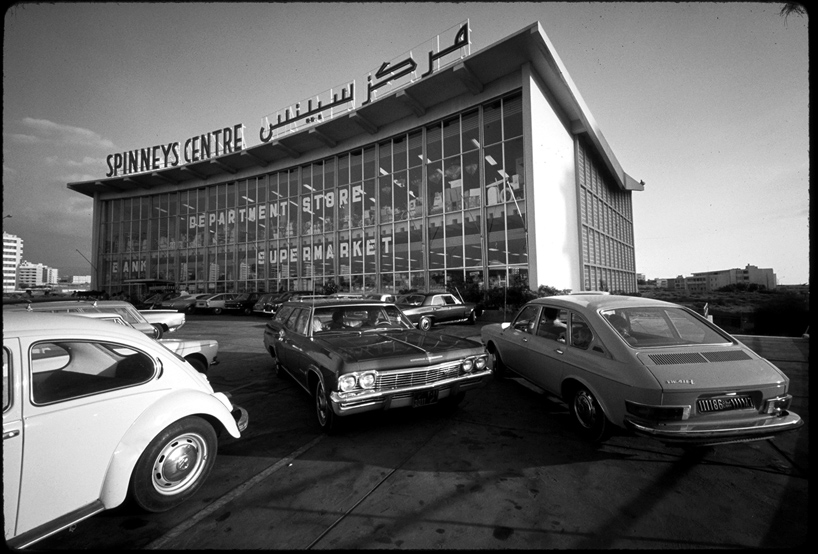
spinneys center by karol shayer, 1975
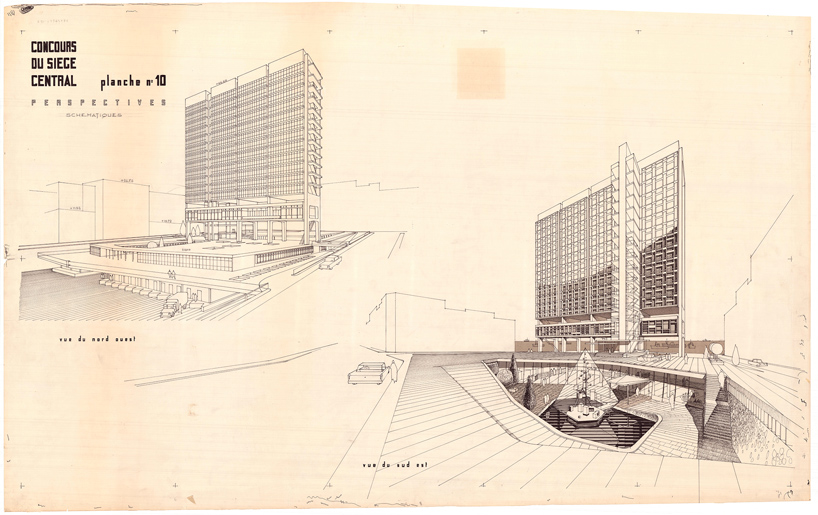
sketch of the electricité du liban headquarters by j.aractingi & nasser conan, 1972
1980 — graphically conflicted
the 1980s were dominated by conflict — the city was engulfed by the deliberate destruction of the built environment. however, as war formed an intrinsic aspect of daily life in lebanon, graphic signage and political posters became a prevalent part of the cityscape. the production of these political posters, without any unified aesthetic, formed a highly eclectic series of visuals that dotted the landscape. artists and graphic designers were informed by a wide range of sources, including soviet and cuban revolutionary posters, 1960s and contemporary pop art, arabic calligraphy and iranian art.
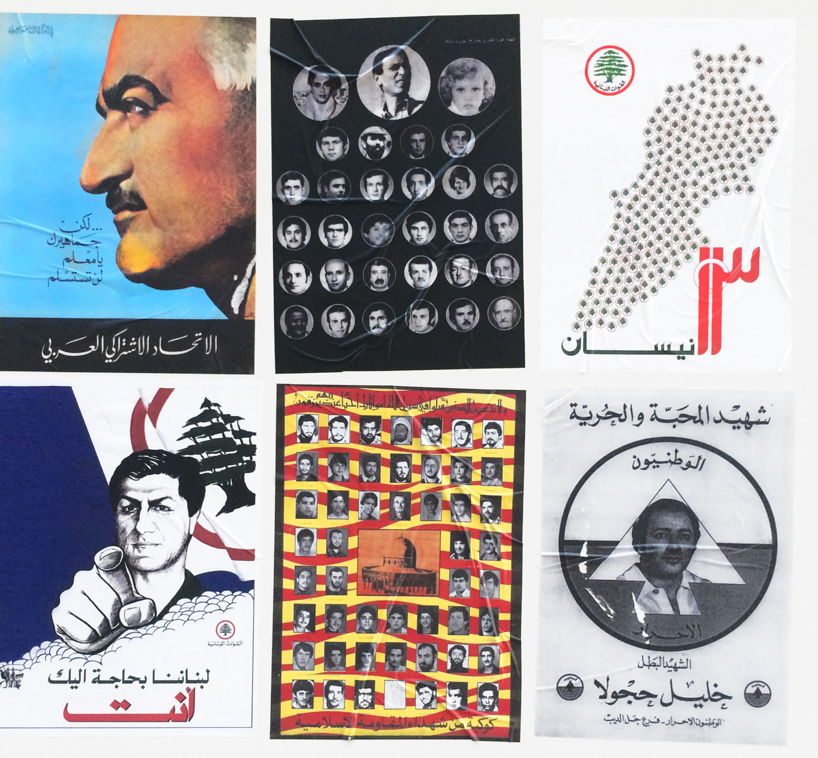
political posters of the lebanese civil war from the 1980s
image © designboom
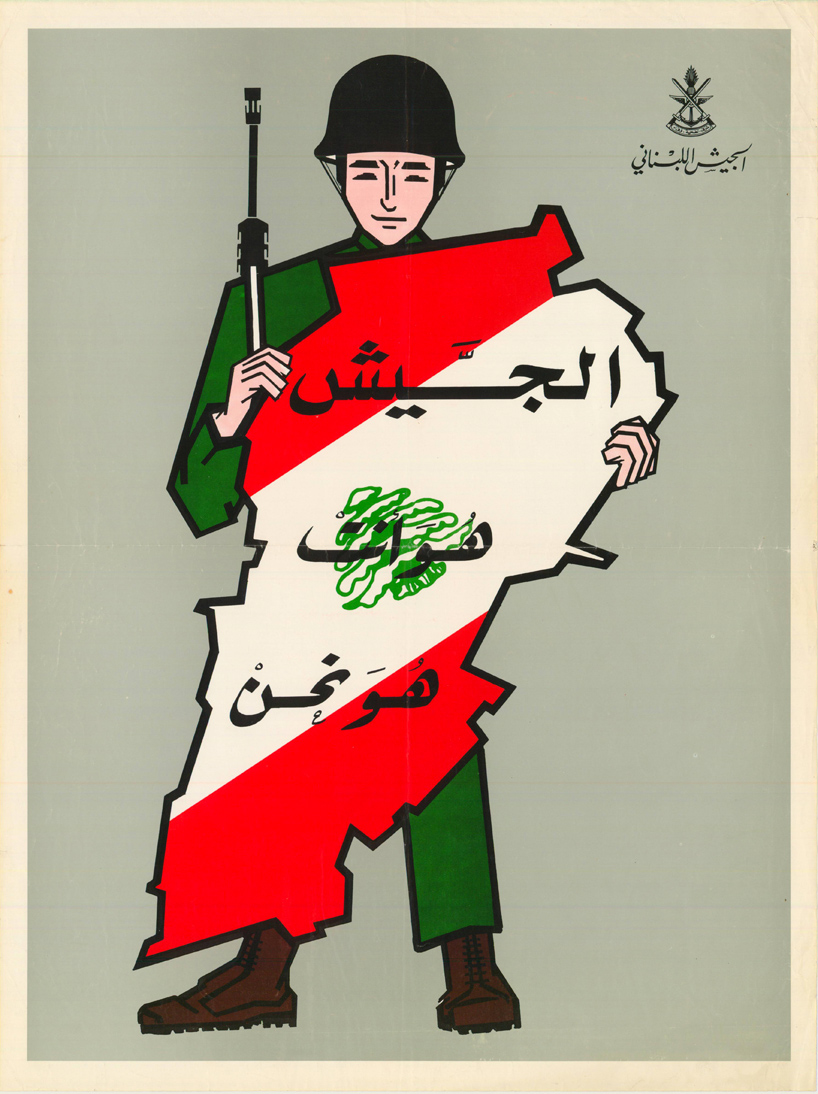
zeina maaasri, political poster, 1980
1990 — peace and revival
after fifteen years of conflict, peace prevailed in lebanon. the 1990s was the decade in which the rebuilding process could begin, where locals not only attempted to move on from the turmoil of civil war, but also to confront and learn from this terrible episode in the country’s history. in the realm of architecture, bernard khoury designed the remarkable underground nightclub ‘b018’ [pictured below], which remains one of beirut’s most important contributions to architecture in the post-war era.
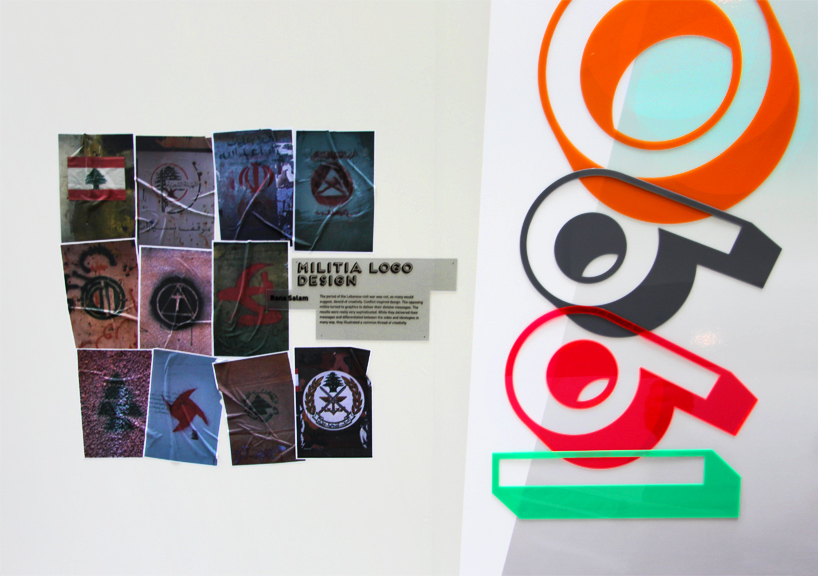
militia logo design from the 1990s — a creative response to the times
image © designboom
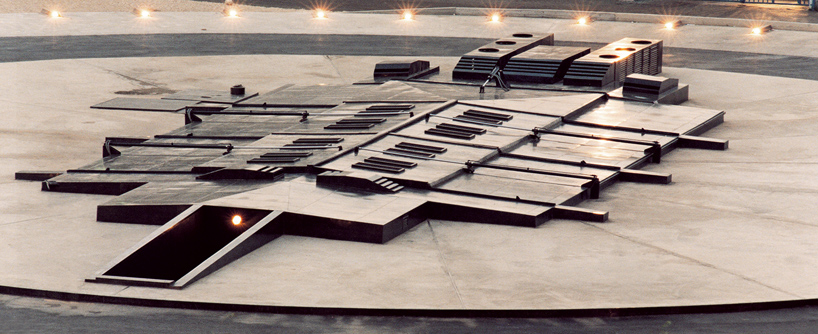
view from above the underground nightclub ‘b018’, built in 1998
image courtesy of bernard khoury
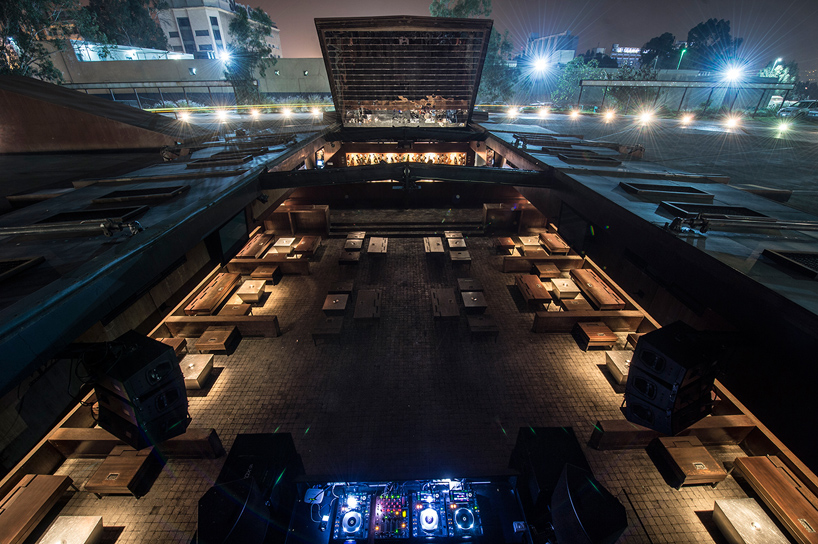
panels open to reveal the ‘b018’ nightclub hidden under the surface of the street
image courtesy of bernard khoury
2000 — the brave new city
finally, beirut returned to a place of peace and prosperity. lebanese creatives in the fields of design and architecture started to reform a distinct aesthetic. architecturally, bernard khoury continued to impact the cityscape with bold statements in the form of residential projects and entertainment venues. product and graphic designers, such as nada debs and rana salam, took up the search for a lebanese style, defining an aesthetic through the transformation of everyday objects into high-end products. graphically, a new emphasis was placed on typography, specifically the arabization of font styles and branding.
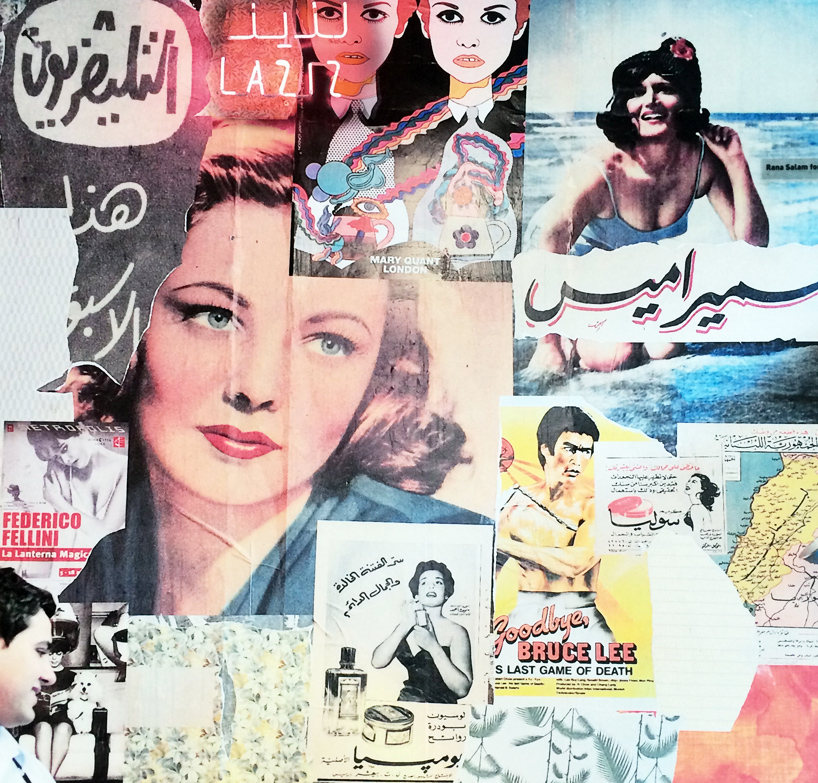
rana salam for boubess group as part of the rebrand of laziz cafe and restaurant
image © designboom
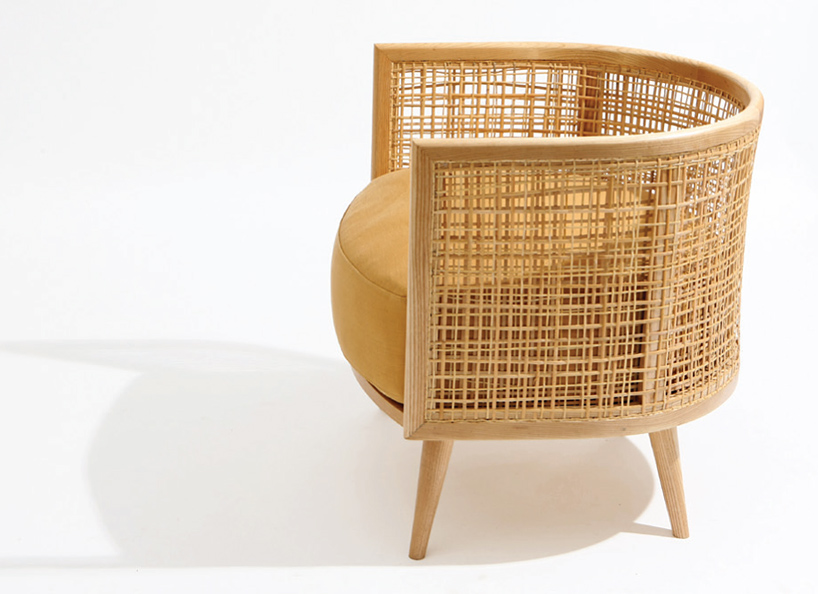
the ‘summerland’ chair by nada debs
beirut today — evolution, not revolution
looking ahead, the trend sees young lebanese creatives turning towards interior and product design. simulataneoulsy, graphic design in the region has continued to be an important creative facet, with a significant international reach. there are also prominent foreign architects working in lebanon today, especially in beirut: david adjaye and recent riba gold medal winner zaha hadid are both renowned examples of british architects creating innovative structures in and around the lebanese capital. in late october, after three years of construction, the ‘aïshti foundation’ opened its doors to the public. the complex is dedicated to presenting contemporary artwork from the private collection of tony salamé, CEO of luxury brand aïshti. see more about the project on designboom here.
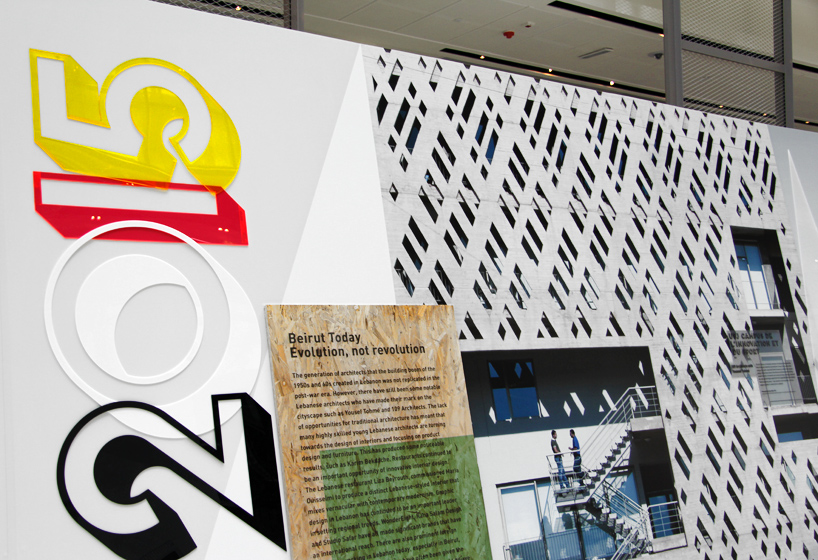
2015 — beirut today: evolution, not revolution
image © designboom
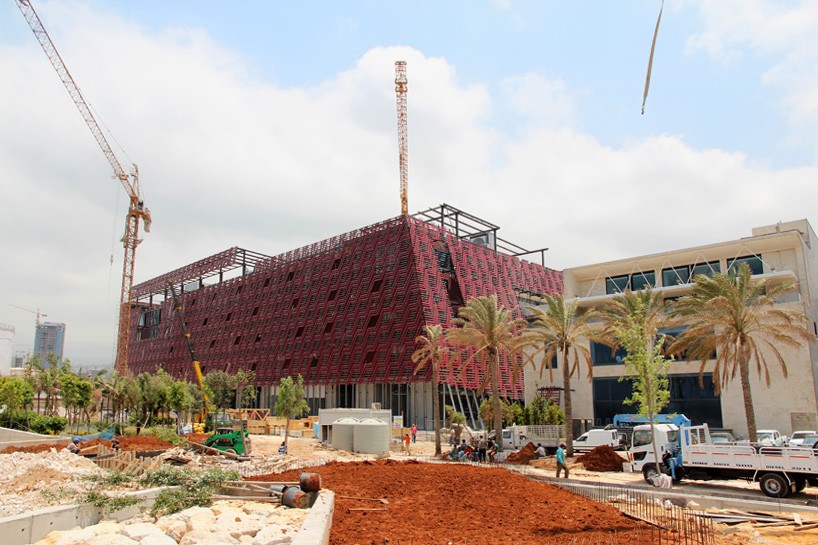
david adjaye’s aïshti foundation under construction
image © aishti foundation

model of the aïshti foundation at the exhibition in dubai
image © designboom
about dubai design week
the establishment of the dubai design week provides a platform for international design weeks to bring established and emerging brands to a new audience. dubai design week will also provide an opportunity for the MENASA countries to demonstrate their design talent within the dubai design district (D3), for ground-breaking installations to highlight many of the iconic buildings and locations within dubai and to promote design education through a program of talks, discussions and workshops.
about the dubai design district (D3)
dubai design district (D3) is dedicated to fostering the growth of the emirate’s design, fashion, art, and luxury industry. it offers businesses, entrepreneurs and individuals a creative community that will be at the very heart of the region’s design scene. D3 is a purpose built environment catering to the full value chain of the design, fashion and luxury industry, all with the vision of creating a world class creative community that engages, nurtures and promotes local, regional and global design talent.
dubai design district D3 (19)
dubai design week 2015 (7)
PRODUCT LIBRARY
a diverse digital database that acts as a valuable guide in gaining insight and information about a product directly from the manufacturer, and serves as a rich reference point in developing a project or scheme.
